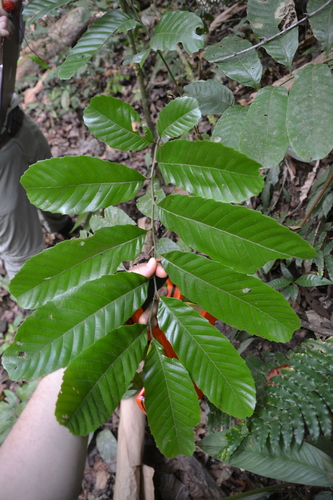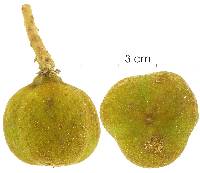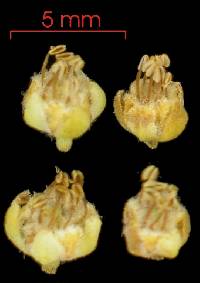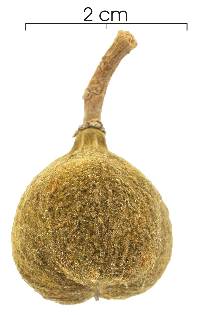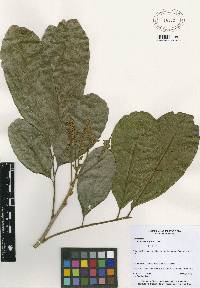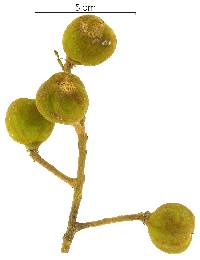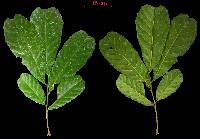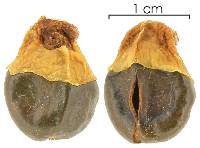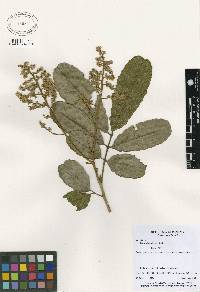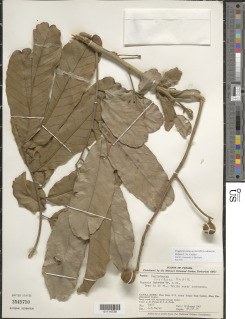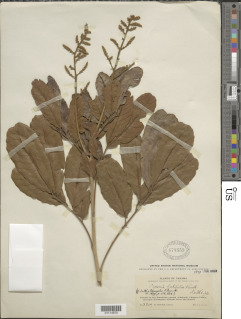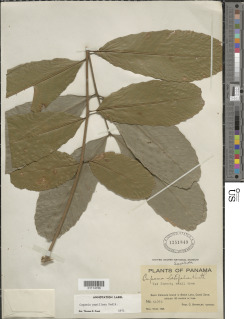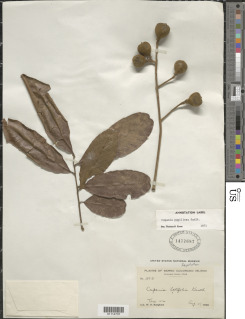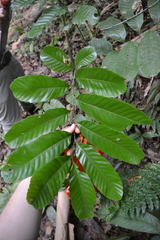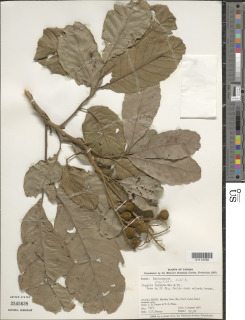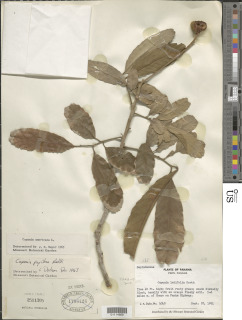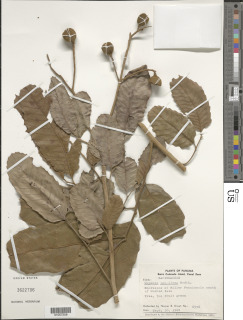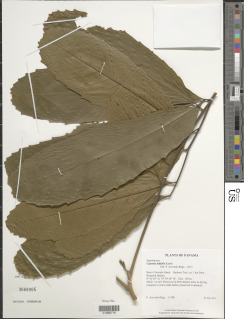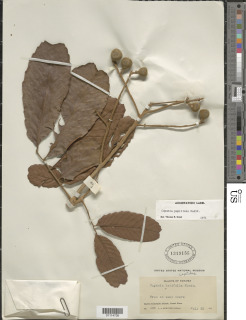

|
|
|
|
Family: Sapindaceae
gorgojero, more...gorgojo
[Cupania papillosa Radlk.] |
Description: A medium-sized tree with a straight but fluted trunk, slightly swollen into irregular buttresses at the base. Leaves are alternate, compound, with 3-11 leaflets that usually alternate with one another (although basal leaflets can be opposite). There is a terminal leaflet, but it is angled to one side. At the base of the terminal leaflet there is a short stalk angling away from the leaflet -- it appears to be a growing bud, but it is not. Leaflets have somewhat toothed margins, but teeth are wavy and irregular. The base of the petiole is swollen, brown in color, flattened. Reproduction: Flowers are small and white, produced in June and July. Fruits are round, brown capsules that split open to reveal a black seed with a red aril; they mature from September to November. Distribution: Widespread in lowland forests, both secondary and mature, from Gamboa to Sherman and in the upper Chagres, but never common. Not seen along roads or in open areas. Similar Species: See LK cupasy C. sylvatica LK2 for a discussion of the genus Cupania. The several species are easy to distinguish -- C. latifolia is the one with wavy margins or blunt teeth on the leaflets, and with neither dense pubescense, a white leaf undersurface, nor a deeply fluted stem. Descripción: Árbol de 10 a 25 m de alto. Tronco con raíces tablares pequeñas en la base. Corteza exterior gris y con lenticelas blancas. Ramitas terminales fuertes y ligeramente acanaladas. Hojas imparipinnadas y alternas, con 3-11 folíolos, alternos en el raquis. Folíolos de 8-35 x 3-15 cm, obovados, con ápice truncado o emarginado, bordes dentados o ligeramente crenados y base aguda. Las plantas juveniles pueden presentar hojas simples y de mayor tamaño en comparación con los adultos. Pecíolo de 3-6 cm de largo y pulvinado en la base. Raquis con crecimiento indefinido y terminado en una pequeña prolongación aguda después del último folíolo. La especie es polígama. Flores blancas. Frutos en cápsulas obovadas, de 1.5-2.5 cm de largo, verdes o marrón, dehiscentes en tres valvas al madurar. Semillas negras y rodeadas en la base por un arilo amarillo o anaranjado. Datos Ecológicos: La especie crece a bajas elevaciones, en bosques húmedos o muy húmedos. En Panamá se encuentra en las provincias de Colón, Darién, Panamá y Veraguas. Común a orillas de caminos y carreteras en áreas boscosas. Florece y fructifica de junio a noviembre. Las flores son visitadas por abejas y otros insectos. Especies Parecidas: A menudo se confunde con LK cupaci Cupania cinerea LK2 , pero en C. cinerea los folíolos tienen el envés blanco o gris. Usos: La madera es empleada para postes de cercas, leña y horcón para la construcción de viviendas rurales. Tree, 4-20 m tall; trunk 5-25 cm dbh, often somewhat twisted; outer bark smooth, bearing fine, granular lenticels which wipe off easily; inner bark thin, tan; sap with faint, pleasant aroma; stems densely lenticellate, the younger parts (including petioles and branches of inflorescence) densely brown-tomentose. Leaves pinnate (juvenile plants often with some large simple leaves); petioles to 6 cm long (15 cm long on juvenile leaves); leaflets 3-11, oblong-elliptic to obovate, obtuse to truncate and sometimes emarginate at apex, obtuse to acute and inequilateral at base, 8-20 cm long and 2-6.5 cm wide (to 35 cm long and 15 cm wide on juveniles), densely short-pubescent to glabrate on veins above, usually papillate and glabrous to sparsely pubescent and with inconspicuous stalked glands below, the margin obscurely crenate to wavy. Inflorescences 15 cm or more long, paniculate, the panicles axillary or subterminal, to ca 2.5 cm long; flowers white, 5-parted, ca 2-2.7 mm long; sepals ovate to oblong, tomentose; petals villous, obovate, rounded or emarginate at apex, the margin fringed, the scales fused to margins of petals, deeply divided in middle; disk thick, bowl-shaped, weakly lobed, densely velutinous except on inner margin; stamens 8, villous below middle; staminate flowers with the stamens to 3.5 mm long, exserted, the pistillode with 3 minute styles; bisexual flowers with the stamens ca 1.5 mm long; ovary ovoid, tomentose, gradually tapered to a stout style; style and stigmas pubescent, together about equaling the ovary; stigmas 3, ca 1.5 mm long, divergent. Capsules subglobose to trilobate, short-stipitate, to ca 2.5 cm diam at maturity, greatly shrinking upon drying and becoming more markedly trilobate; valves thick, woody, densely dark-brown-tomentose outside, woolly inside; seeds black, shiny, ca 1 cm long, enveloped at base with an orange-yellow aril. Croat 11076, 11981. Like most other Cupania, this species is variable throughout its range, especially in the type and degree of pubescence. It merges almost imperceptibly at times with a number of other species, including C. americana L. (West Indies and northern South America), C. scrobiculata L. C. Rich., and C. oblongifolia Mart. (Brazil). C. papillosa Radlk., segregated by Radlkofer on the basis of the dense papillations and glandular trichomes on the lower surface, is only an extreme form of this species. See Fig. 338. Bocas Species Database Characteristics: Large tree |
|
|
|

